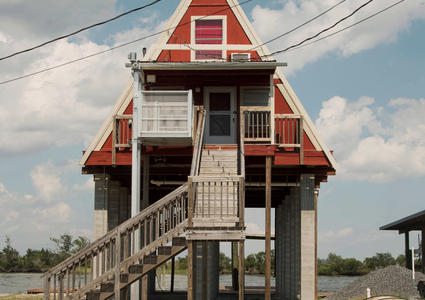Showing up at the airport with just a few too many kilos in your suitcase can be the worst way to begin a vacation, causing unnecessary stress and hurting your wallet. But for airplane manufacturers, whose big jets are meant to last for decades, and large commercial airlines operating thousands of flights per day, the weight of the components that planes are made of involves a direct impact on their profitability.
That’s where TR35 Ana Díez comes in. For years, compound materials like the ones she creates have been an essential part of the aeronautics industry. They have broadened the array of properties that aircraft manufacturers can use to build more efficiently, such as greater resistance and lightness. By fusing multiple components, such as a matrix with reinforcement materials, these materials yield superior construction qualities that have caught on in all kinds of sectors, from sports to engineering. Now, the young chemist specializing in nanomaterials has discovered a way to improve them by finding more efficient ways to produce them.
Díez, who works at the Institute of Polymer Science and Technology for the Superior Council of Scientific Investigations (ICTP-CSIC) in Spain, has designed a simple method that can be scaled on an industrial level to produce thermoplastic nanocompounds that incorporate other reinforcing materials. More specifically, she has established a system to integrate carbon nanotubes—a special form of this element with good electric, thermal, and mechanical properties—in two important types of polymers in the aeronautics industry: epoxy resins and polyether ether ketone (PEEK).
This idea came about from collaboration between the Institute of Polymer Science and Technology and the Institute of Carbon Chemistry (both of which are centers of the CSIC), and two member institutions of the Canadian National Research Council, where the TR35 winner did part of her postdoctoral studies. “The strategies that we develop have given rise to a better dispersion of nanotubes compared to direct integration, which is the standard method of incorporating them into a polymer matrix, and which typically results in the formation of aggregates that limit the enhancement of the polymer’s properties.”
Through her research, she has discovered a method of better fusing the matrix and the carbon nanotube coating, which, she explains, allows the “nanotube reinforcement to account for less than one percent of the weight,” a figure far lower than what’s usually accepted among compounds that incorporate other types of nanoscopic reinforcements, such as nanoclay or nanofibers. “In terms of industrial application it supposes a reduction in weight and, consequently, a reduction in cost and contaminating emissions,” Díez affirms.
Furthermore, the materials designed by the TR35 winner are incredibly versatile given their excellent electrical and mechanical properties. “They are multifunctional materials,” Díez explains. “They could be used in cases needing high conductivity, for example, antistatic coatings or shielding electromagnetic waves, as well as those instances in which they must demonstrate strong structural properties, as blades in wind energy generators or in bridges,” she adds.
These advantages in a wide range of fields owe themselves to her particular strategy. The covalent bonding of polymer derivatives “excellently disperses” the carbon nanotubes and “optimally adheres” the ‘layers’ of materials. With this system, Díez explains, “greater increases can be obtained in the mechanical, electrical, and thermal properties, with less concentration of reinforcement materials than what scientific literature has typically accepted among these types of compounds.”
According to Flightglobal, within 20 years 75% of commercial airliners flying today will still be in operation, but there will also be many more planes in the air—almost 40,000 compared to 23,000 that compose the current fleet. Consequently, these aircrafts will need to consume much less fuel and restrict their carbon emissions as much as possible. The best strategies (finding the most direct routes, advances in traffic control technology, etc.) and the use of advanced biofuels -although quite expensive- can help reach these objectives, but the weight of airplanes will continue being a key factor. However, if this limiting factor can be improved using the technologies designed by this young TR35 winner, it could change the course of sustainable aviation.
“The development of these compounds on a grand scale offers important advantages when it comes to the fabrication of new materials in the transportation sector,” says Díez. She is in the middle of negotiations with a multinational aeronautics company in the hopes of seeing her carbon nanotube design take off.
In the eyes of Jorge Welti, the Postgraduate Director of the Biotechnology and Nutrition at ITES in Monterrey (Mexico) and a member of the TR35 Spain Awards’ jury, this young innovator “projects an audacity in her search to apply her discoveries in diverse, scientific ways.” Her concentration on the development of mutlifunctional nanocompounds, he says, “is very timely and of great importance.” - Translated by Julia Barrero.


